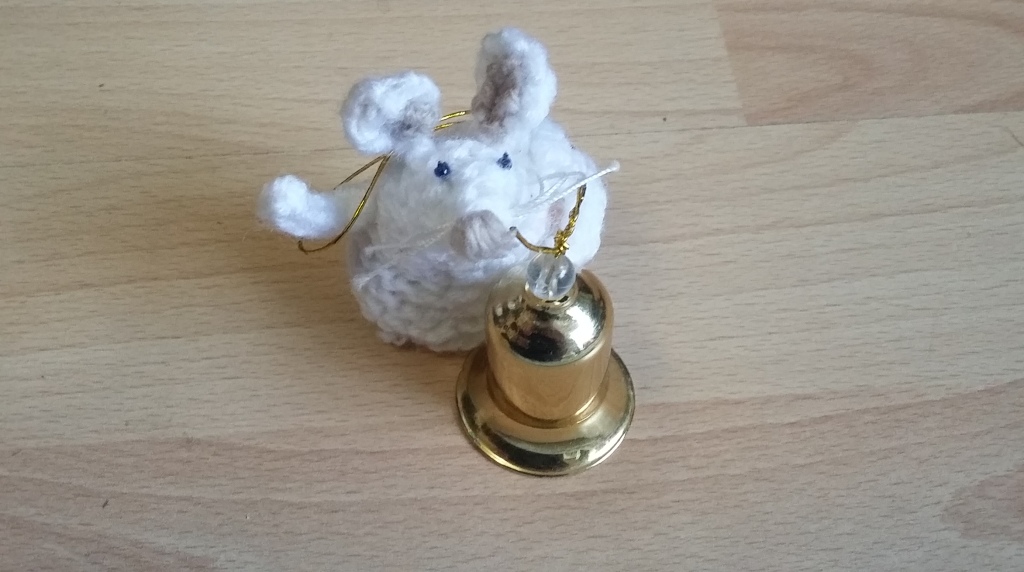Caer Ddewin
There is one stone circle in Farynshire, and it sits just outside the territories known collectively as Wild Wolvern Mey. Caer Ddewin is a squat, flat-topped hill with slippery black flanks covered in wild gorse bushes. There are secret paths to the top, but those who try to find them without a guide usually end up slipping on the shiny rock and end up impaled on the fierce gorse needles.
The most famous story relating to the Caer gave it its name, and comes from a time before there ever was a Wild Wolvern Mey. There are various versions of this tale, but the common threads involve one of the many skirmishes (some historical, some now nothing more than myth and legend) between humans and wolvern. A pack of wolvern was besieged upon the Caer. The humans had the Caer surrounded, and used their mage to create a thick fog which descended upon the summitt, until even the humans could not see or find each other. This was an enchanted fog (it was said) and when the humans eventually broke through the thickets of gorse, torn and bleeding, they saw no wolvern, nor any sign that they had fled, and only nine hunched stones stood upon the Caer. The wolvern had been turned to stone.
This does not sound very Christmassy so far. But Christmas Eve is the time when the deepest magic rises up and over the ancient hill and the freezing night air is thick with the feel and taste of it. The wolvern feel it, and their long, mournful cries echo in the darkness. It is said that if you stay on the Caer on Christmas Eve you will see the hunched stones stand upright, come to life and frolic in the snow.
This is definitely no longer true, if ever it was. What you will see on the night of Christmas Eve is the Dance of the Shadows. Everyone is invited – presumably even the wolvern, but they have yet to RSVP.
It begins in the early evening when people from the surrounding villages leave their warm homes, the fires crackling low in the hearths, and the Christmas dinners ready to be placed in the ovens the following morning. They wrap themselves up in scarves and hats and walk out of their villages, into the fields beyond, over the frozen ground, following those with lamps and torches. As they near Caer Ddewin they meet up with people from other villages, and excited laughter and loud chatter fills the night air.
It is unwise to try and climb the Caer if you do not know the hidden paths that wind through the treacherous gorse and provide a true surface to walk upon over the slippery slopes. Guides from the villages lead the people safely to the summit (they will also escort them safely back down when they might be a little worse for wear after the festivities).
Lanterns are placed on long poles by each hunched stone to illuminate the flat space at the summit of the Caer. Small fires are lit around the edge of the stone circle in order to heat up the mulled wine and melt the marshmallows. Once everyone is comfortably settled on the blankets, rugs and cushions they have brought with them, gloved hands wrapped around mugs of steaming mulled wine, the dancers emerge from behind the stones.
The dancers are dressed in black, and they move like shadows in the warm glow of the lanterns’ light. They make their way amongst the watching crowds, making the smaller children squeal in delighted terror. They are fleet of foot and as soon as anyone realises they are beside them they are gone again. The dancing can last about an hour, and it finishes with a flash of magical lights in which the dancers disappear, just like the ancient wolvern did. At this every lantern is extinguished, plunging the whole Caer into darkness.
The challenge then is get everyone safely off the Caer and back to the warmth and safety of the village pubs. To date, nobody has been lost before Christmas morning.

Brish
There are Christmas markets in every town and village in Farynshire, and any of them are worth a visit, but if you only have time for one, definitely go to Brish. It is said that Father Christmas himself visits the market for gift ideas.
Brish is small town nestled in the foothills of the Bloon Peaks, and it is known for its regular snowfall. The last time Brish had a snowless Christmas market was in 1837. The townsfolk have a snowman competition in the week before their market, and their efforts line the main road leading into Brish, welcoming the shoppers and visitors with smiles made of coal and carrot.
A steam-powered engine with tiny wheels and a large chimney stack pulls a small line of carriages through the streets so that people can hop on and off at the stalls they wish to visit. The stalls line the streets around the small square in the centre of the town, selling locally made products ranging from colourful wooden toys and decorations, to handmade chutneys, cheeses, sausages, wine and ale, to exquisite jewellery (but do not believe any seller who claims that the gems in their jewellery come from wolvern mines) and crafts and stocking fillers. You should be able to do all of your Christmas shopping here.
Shoppers make their way to the square in the centre of Brish, laden down with their wares, ready for hot food and wine. A large pit is dug in the centre of the town’s main carpark every year for the hog roast. A crackling pig, bursting with juices that cause sparks to spit from the fire, slowly revolves over a large open charcoal fire, and visitors line up to claim their piece. The stalls around the pit offer all the trimmings you could want from roast potatoes, sprouts, carrots, broccoli and parsnips, to hot chestnuts, gingerbread and candied fruits, as well as bubbling fruit wines and hot chocolate.
Choirs sing carols from the doorway of the old stone church at the far end of the square, and hand out decorations for children to place upon the tree in the courtyard.
The Brish Christmas Market lasts for three days – so make sure you get there in plenty of time!

Lake Quietus
For the months of November through to March Lake Quietus is frozen. It does not matter what the weather or temperature is like in the rest of the county; even during the rare mild winters where there is no snow except on the tops of the highest mountains in the Daggerrock Range, the lake freezes solid.
People move onto the ice as soon as the water has frozen. Temporary structures, some three stories high and re-used every year, and streets are set up around the edges (in case of a sudden thaw). Many people move on to the ice permanently during these months, living in rooms above their shops. In years gone by there was no limit or rule as to how many or who could claim a spot on the ice. This led to fights over spaces, the Terrible Crush of 1911, and a lot of corruption. These days there is a strict map that must be adhered to. There are limited spaces (although it still feels crowded) and applications for a spot are restricted to traders. The streets of stalls are kept to the periphery of the lake, as the centre is where the entertainment takes place. The lake attracts thousands of visitors, and is at its most popular just before Christmas. It is well worth seeing at this time of year, but to avoid the really busy periods try and plan your visit for early morning.
In the days leading up to Christmas there is a carnival atmosphere. Fairgrounds are set up in the centre of the lake. At first these were merry-go-rounds and stalls for shooting wooden ducks, but these days they include bumper cars, waltzers, and a rollercoaster that climbs high above the lake and takes its riders in a wild ride over the temporary streets and stalls. Circus and music shows are put on in the large tent (bring a cushion to protect yourself from the chill). During the day there is sled racing, curling and ice-skating.
After Christmas the lake becomes a lot quieter, though some traders take pride in staying right up until the ice starts to finally melt in the spring.

Gnivil Forest
If you happen to be in Gnivil Forest at Christmas time you might notice something strange.
At this time of year most of the forest slumbers. If there are foresteens amongst the leafless trees they are deeply asleep.
Well, most of them are.
You have to be quiet and patient and careful. If they know you are there, you will not see them.
Even if you are quiet and patient and careful you might not see them.
While the oaks, elms, beeches, birches, alders and the other warm-blooded trees sleep, it is the time for the holly, mistletoe, ivy, spruce and fir to come to life.
The best chance of seeing anything is on a clear night when the sky is full of cold white stars.
But it is only if they think nobody is looking that the winter trees light up the dark forest.
Holly berries burn brightly as their dark leaves shimmer with their own internal luminescence. The mistletoe glows so brightly that it lights the tangled forest paths, each tiny berry a soft halo. The ivy berries are clusters of darkness that is blacker than the night itself, so dense that they could be holes in reality.
There are tales that those who have strayed from the forest paths and become lost are guided back by silver dust glittering amongst the needles of the firs and spruces, the only trees in the forest with any green in winter, a sign of life and resilience even in the deepest snows. Nobody has ever collected any of this dust (though many have sought it), and it seems to only appear to those in need of guidance. Sometimes, from a distance, an ethereal silver mist can be seen rising from the depths of Gnivil Forest, rising up to the bright stars and dissipating in the cold winter night. If you run into the forest to try and find where it comes from, you will never find it.
The foresteens are always elusive, but if you are quiet and patient and careful, and most of all, lucky, you might glimpse them enjoying winter.

Definitely an amazing blog 🙂
LikeLiked by 1 person
Aw thank you!
LikeLike